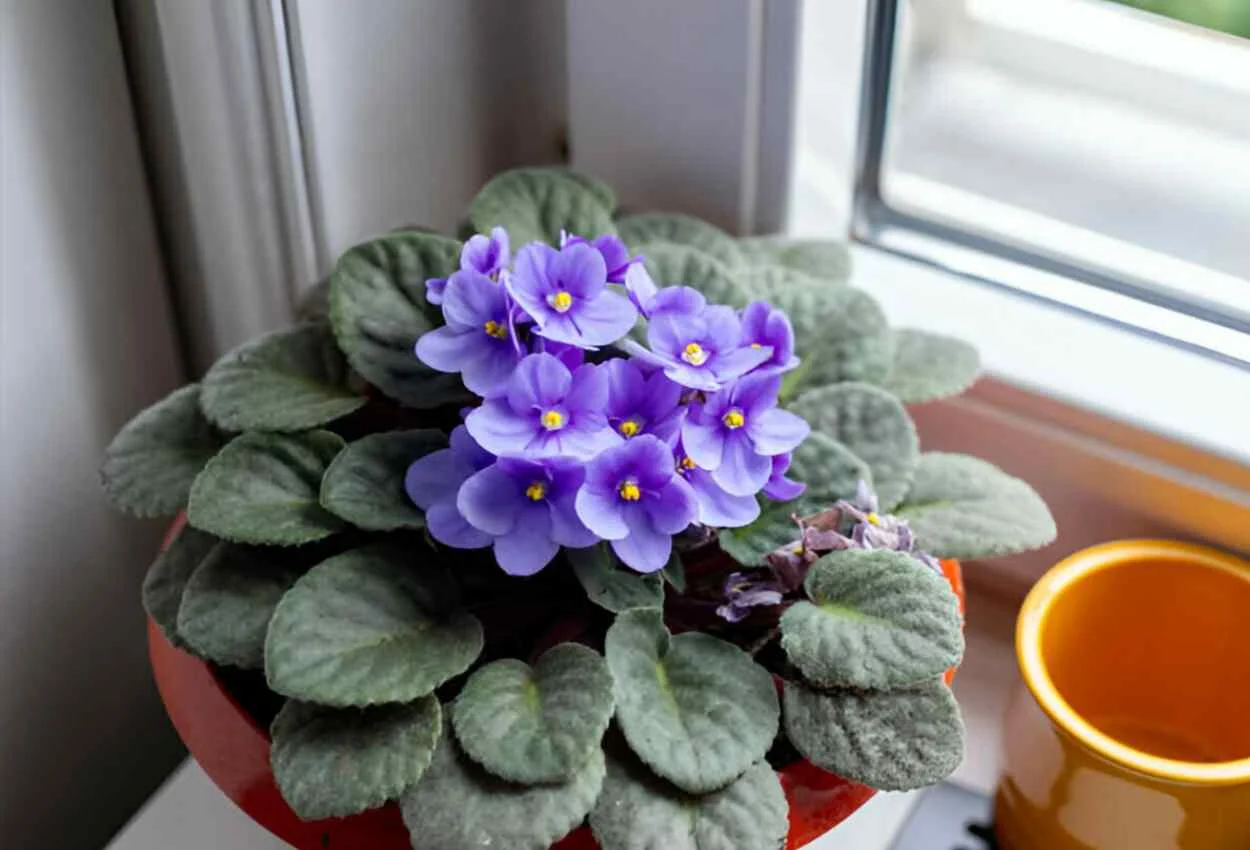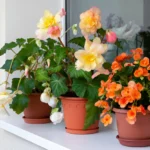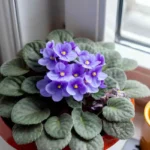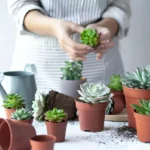Table of Contents
In America, the African violet has been a popular houseplant for indoor gardeners for decades. African violets look beautiful because of their dark green, pinnate leaves and colorful flowers. My favorite variety of African violet is Fisherman’s Paradise; their variegated leaves are so attractive that you can’t take your eyes off them. I will guide you in this article on African violet care.
Quick Facts
- Scientific Name: Streptocarpus sect. Saintpaulia
- Family: Gesneriaceae
- Kingdom: Plantae
- Natives: Natives of Tanzania, southeastern Kenya
- Leaf Foliage: Deep Green
- Size: Common 12-15 inches
- Hardiness Zone: 11-12
African Violet Overview
The African violet was discovered in 1892 by Baron Walter von St. Paul-Yeller and is now a popular houseplant worldwide. When you hear the name African violet, you may think that the color of the plant or flower is violet, but they come in colors like maroon, pink, white, magenta, yellow, lavender, fuchsia, coral, and more. The most popular colors are available in stores by their names. African violets also grow along rocky ledges or under large trees in tropical rainforests, so they naturally prefer to stay out of direct light. Their dark green velvety leaves have fine hairs that give them a crisp appearance. The leaves of the African violet look like discs, and the flowers of one color come in bunches between the leaves. Variegated varieties of African violets are more attractive to look at. A few varieties I like very much are Cherry Princess, Devotion, Mac’s Jubilant Jamboree, and Fisherman’s Paradise. All of these species, except African violets, have different names for their roots. However, some species are endangered due to the clearing of their native cloud forest habitats for agriculture and are disappearing day by day
Things to Keep in Mind While Buying
African violets can be quite sensitive, so when you bring them home, you should choose an insect-free plant with healthy leaves. You should not bring home an African violet plant that is unhealthy and infected with fungus in the medium, thereby putting your plant and other houseplants at risk. Choose an African violet plant from a nursery store that is healthy, fresh, and free of yellowing leaves.
Pot and Repotting
Self-watering pot: African violets grow best in self-watering pots. African violets like moist, well-drained soil but do not like overly wet soil. Self-watering pots provide the required water to their medium so that excess water does not enter the medium and the medium does not remain soaked. You can also use decor or cover pots, but make sure there are drainage holes. If not, plant African violets in nursery pots and place them in cover or decor pots. I have seen many African violets planted in clay pots, but from my experience, the leaves of African violets love to spread, and when the branches attached to the leaves come in contact with the clay pot and rub, the leaves fall off quickly. Try avoiding clay pots for African violets. You plant African violets in shallow, spreading beds to keep their roots close together.
Repotting
Whether you buy African violets from a nursery or online store, bring the plant home and report it. Stores use low-quality medium to grow plants, which causes plants to suffer from a lack of nutrients in that medium. You bring the African violet plant home and report it. Also, report your African violet plant every 6-12 months. Care should be taken, however, to avoid repotting when African violets are dormant. When repotting, African violet roots should be gently removed from the medium. If any part of the roots is black or dark black, prune it with a pruner. While repotting, you can also prune the old leaves and yellow leaves. When repotting, you should always try to transplant into a pot one size larger so that the roots can naturally blend into the soil.
Water
African violet plants are sensitive and will suffer if you don’t water them properly. You must be careful while watering. I don’t take risks with this sensitive plant; I always water it from below. When watered from below, the African violet plant medium is watered as much as it needs, and the roots do not sit in water, thereby avoiding the risk of root rot. African violets are heavily attacked by Pythium and Phytophthora fungus, resulting in regular root rot diseases. You can protect your plant from water problems if you maintain and water it properly. If you want to water the medium directly, use a watering can to add a small amount. I have found the water-wicking method works well. Using a plastic pot and nylon rope, you can make a water wick for African violets at home. Avoid using soft or chlorinated water for your African violets. During dry or cold seasons in America, you should not give boiling water or very cold water to African violet plants. You can use tolerable water. Indoor garden experts advise against spraying African violets with water. Spraying African violets with water can cause leaf spotting, and African violets are irritated by waterlogging on the leaves and crown.
Medium
I make a medium of perlite, vermiculite, sphagnum moss, and charcoal for African violets. You can also make medium with all these ingredients; make sure their roots are in a well-drained medium. You should not use potting soil in the medium for African violet plants, even if you use prepared soil. Their roots are very sensitive and can quickly rot in a wet medium. I recommend Espsoma brand making Organic African Violet potting mix if you want to avoid making medium at home. This medium is carefully formulated by the company for African violets, and no synthetics or chemicals are used in the packet, which is why I have seen repotting with new buds within 7-15 days. Available in 1.4-pound packets. Whether you make your own or buy a packet of medium, always provide a medium that contains drainage and nutrients for the violets.
Light Requirements
While all other house plants require less light, the African violet plant needs 10-12 hours of light and the rest in darkness. All we know about African violets is that they are tropical plants, and their habitat is in tropical rainforests where they thrive in large tree canopies and the trees struggle with extreme heat and humidity in the tropics. It should be kept in a place that receives light for 10-12 hours. However, getting enough sunlight during the winter can be difficult. You can use fluorescent or LED lights, but keep in mind that the distance of the light from the plant should be 14-16 inches. You can place it in the east-facing window of the room with an African violet plant pot. But you will get better results if you keep it in the east/west-facing window in winter and the north-facing window in summer.
Temperature
African violets thrive at 65-85°F and 15-24°C. America’s dry and humid climates require it to control its temperature. Especially if you live in the South and Southwest regions where the temperature is high, you must work on your home’s temperature control. African violet likes humidity; you can keep it at 50-60%. You can use a humidifier to control the moisture in the room. However, care should not be taken to keep the African violet plant near AC or heaters. You can control the humidity or keep the plant moist by adding rocks or gravel in the saucer and adding water. Now, place the pot of African violets on top of the stones to keep the plant moist.
Fertilizer
Like most expensive houseplants, African violets require fertilizer. Add fertilizer mixed with water every 2-4 weeks during the growing season. Many people use balanced fertilizers such as NPK, but I recommend you use NPK with a little more phosphorus. Before putting it on the plant, you must dilute it by adding water and do not put it directly on the medium. Otherwise, the roots may burn.
Clear the Leaves
You can use paint or makeup brushes to clean the leaves of the African violet plant. It is better not to wipe with a wet towel because it can cause water to sit on the leaves. When repotting, brush off any soil that may get on the leaves. You can dust African violet plants 2-3 times a week as dust can build up on their leaves, which can later inhibit photosynthesis. Also, they get upset when water or dirt accumulates on their leaves, so I keep them clean regularly.
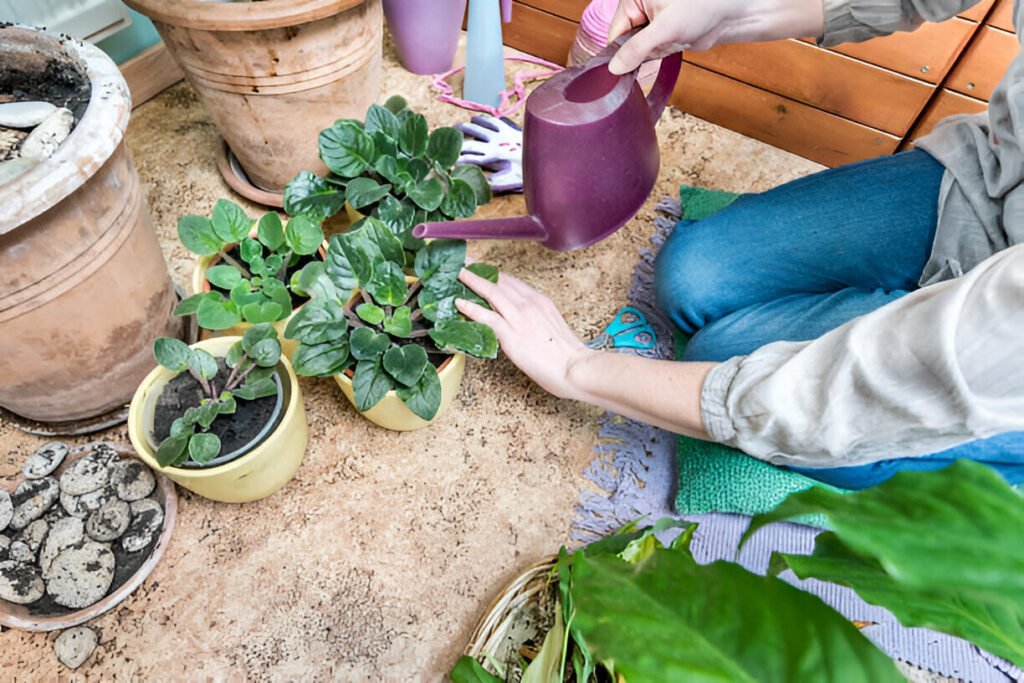
African Violet Not Growing Flowers?
African violet plants stop flowering due to a few common mistakes. If you have also made these mistakes, I will tell you to quickly try to correct them and pay attention to the care of the plants. As I’ve said a few times before, African violet plants are sensitive; they love to annoy and irritate you. You must properly care for them to be lucky enough to see their flowers in groups. This happened to me, too; don’t be disappointed. I’m telling you how I managed to get my African violet plant to bloom. First, I check if the plant is getting enough light where I keep the African violet plant. They need at least 10 hours of light, but remember you can’t put them in direct light. Please put them in filtered light or indirect sunlight. Their leaves have a chance to die in the heat of summer, so keep them in filtered light. In the winter season, the light changes to sunshine. In the winter season in America, northern states get an average of 8-9 hours of sunlight. You may need to use grow lights if you live in these areas. 9-11 hours of daylight are available in the southern states, but you may need to use grow lights in these states due to light variations. African violets will only flower with enough light. When you can see they are not getting enough light, try increasing the amount to see if the correct amount of light has led to African violets budding. After that, if the buds do not come, you must understand that your plant is not giving flowers due to a lack of nutrients and food. It would help if you considered repotting the plant in a quality medium.
A quality flower medium is rich in nutrients, and nutrients can be properly distributed to every part of the plant through the plant canopy as the nutrients needed by the plant are present. The plant becomes healthier, and the number of flower buds increases in these healthy plants. You can also dilute liquid fertilizer with water. Fertilizers that contain a little more phosphorus will greatly help the flowering and budding of plants. Mix it with water every 2-4 weeks. But remember to avoid giving them fertilizers in winter. Hopefully, with these few steps to care for your African violet plant, you, too, will see dozens of blooms.
FAQ
Why are African violets changing color?
= Due to the medium’s lack of sufficient light and nutrients, their leaf color and variegation can also disappear. If you notice this in your plant, increase the light and mix plant food with water.
Is my African violet safe for humans?
= African violets are non-toxic to humans and pets.
Can I plant African Violets From leaves?
= I have transplanted several times from mature leaves. It may take 3-5 weeks from leaf to seedling (rooting). New leaves and buds take longer to emerge.
Best soil mix for African violet plants?
You can use Miracle-Gro African Violet or Espoma Brand African Violet Mix. However, I have always had good results by making a medium using 50% perlite, vermiculite, sphagnum moss, coco peat 25%, and 25% worm compost, which I still need to prepare myself.
